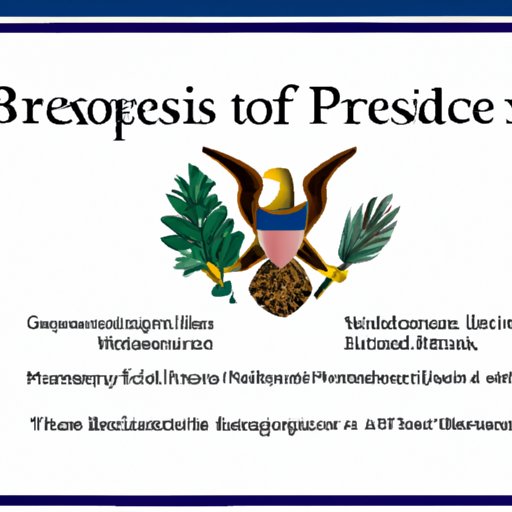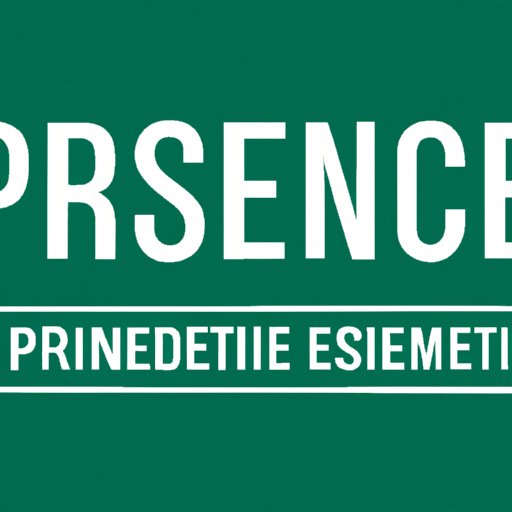Introduction
The United States government is structured into three branches: the legislative, the executive, and the judicial. However, many people find themselves confused about which branch the president is in. Understanding the role of the executive branch and the power of the president is key to being an informed citizen and actively participating in American politics. This article aims to provide a comprehensive guide to the executive branch and the president’s responsibilities.

Understanding the Powers of the President: A Guide to the Executive Branch
The executive branch is responsible for implementing and enforcing laws passed by Congress. The president is the head of this branch and is responsible for making important decisions and ensuring that the federal government runs smoothly. The president has a range of powers, including appointing judges and other officials, vetoing laws, and serving as commander-in-chief of the military.
Examples of past presidential actions that demonstrate their power include Franklin D. Roosevelt’s New Deal programs during the Great Depression and Barack Obama’s executive order allowing for Deferred Action for Childhood Arrivals.
The Presidential Puzzle: Decoding the Complexities of Executive Power
The president’s power is not absolute and is checked by the other branches of government. However, the president’s power has expanded over time, particularly in relation to national security and foreign policy. This expansion of power has led to controversy and legal battles over the limits of the president’s authority.
Examples of past presidential actions that have pushed the limits of their power include Richard Nixon’s use of executive privilege during Watergate and George W. Bush’s authorization of domestic surveillance without a warrant.
A Closer Look at the White House: Exploring the Role of the President
The White House serves as the center of presidential power and is staffed by a variety of advisors and officials. The president relies on these individuals to help shape policy and make decisions. As the face of the federal government, the president also uses their platform to communicate with Congress and the public.
The Executive Branch: How the President Leads Our Nation
The president serves as a symbol of American leadership and is responsible for setting the tone and agenda for the country. The president can work with Congress to pass legislation, but can also issue executive orders to implement policies on their own. Effective presidential leadership can lead to significant change, as demonstrated by Lyndon B. Johnson’s passage of the Civil Rights Act in 1964.
From Campaign to Command: The Transfer of Power in the American Presidency
The presidential election process is complex and involves a series of primaries and caucuses, as well as a general election. After election day, there is a period of transition where the president-elect prepares to take office. Inauguration day marks the official transfer of power from the outgoing president to the incoming one. The president’s first few months in office are typically seen as an important period where they establish their priorities and set the tone for their presidency.
Demystifying the Oval Office: An Introduction to the President’s Responsibilities
The president’s day-to-day responsibilities include meeting with advisors, making important decisions, and communicating with foreign leaders. The president is responsible for a wide range of issues, from national security to social policy. Presidential decision-making involves considering a range of factors and gathering input from a variety of sources.
The Art of Leadership: Examining the Influence of the President in American Politics
The president’s leadership style can have a significant impact on American politics and policy. Past presidents have used their leadership to effect change in a variety of ways, from advancing civil rights to launching major infrastructure projects. The potential impact of a strong (or weak) leader in the presidency underscores the importance of the American people being engaged and involved in the political process.
Conclusion
In conclusion, understanding the role of the executive branch and the powers of the president is essential for being an active and informed citizen. By understanding the complexities of executive power and how past presidents have exercised it, we can gain a better understanding of how our government works and be better equipped to participate in the political process. Let us all work towards ensuring effective leadership and representation in our government.
